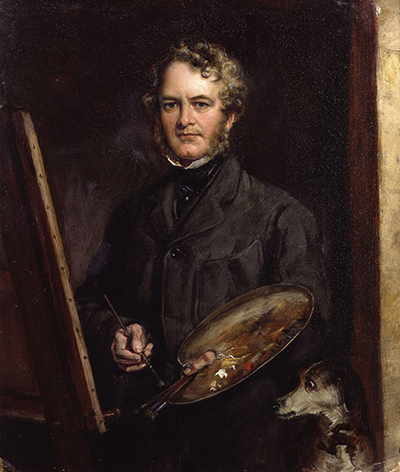Sir Edwin Henry Landseer was a famous British painter and sculptor, best known for his work depicting animals. The highlights from his career included The Monarch of the Glen, Eos and also the Four Lions at the Base of Nelson's Column.
The prominence of Landseer's lion sculptures in Trafalgar Square ensures that his name will remain in the public domain, yet it was more so his paintings that earned his reputation during his own lifetime. Landseer and George Stubbs earned reputations for their precise studies of animal anatomy. Both would take their pencil and chalk drawings into oils on canvas, adding colour, perspective, light and additional detail. Landseer himself would also make use of other artistic genres within his career which added further elements of interest. His work with Queen Victoria and Prince Albert would also help to elevate his reputation to an even higher status.
This was an artist who used a fairly traditional style of painting. Despite that, his work continues to receive considerable interest today, perhaps in part due to the popular nature of animals within art. There were also some charming landscape paintings set in breathtaking locations around the Scottish Highlands. Landseer himself was employed by Queen Victoria in an attempt to boost her reputation within this nation, with much of the content aimed at increasing her connection and perceived passion for this region. His relationship with the royal couple became so intimate that he was even commissioned to produce a portrait of Prince Albert’s beloved dog, Eos. Queen Victoria also spoke regularly about her admiration for this specific artist.
Landseer was undoubtedly an artistic and financial success during his own lifetime, which is not something that all major artists can claim. He generated an extra stream of income through engravings of his paintings, some of which were produced by his brother. This also allowed his reputation to spread far and wide, both geographically but also into different levels of society. Engraving was actually a technique embedded in the history of his own family, with his father being heavily involved in it. The artist was therefore immediately encouraged to pursue art as a career and was given training by a number of different artists, one of whom encouraged him to study animals in detail in order to improve his portrayals of them. See also Landseer prints.
Edwin Henry Landseer forged a unique path with British art history and left a significant legacy behind. Few have captured the natural beauty of animals as well as him, allowing us to feel entirely present in many of his paintings. It was rare for someone to combine animals, human figures and landscape scenes together so successfully. Many have done so with two of the three, but not quite all three. We remember Gainsborough's Mr and Mrs Andrews, for example, which produced a portrait amidst a landscape scene. You could then refer to Constable's Flatford Mill (Scene on a Navigable River), which again combines figurative portraiture within a landscape scene. The greatest of them all, JMW Turner, focused entirely on nature, with endless seascapes and landscapes to enjoy such as Fighting Temeraire, Rain, Steam and Speed – The Great Western Railway and Shipwreck. Finally, there was the satirical work of Hogarth in creations such as Gin Lane and Beer Street. In all, there is much to see in the back catalogue of British art, and Landseer left an indelible mark of his own.
Looking further afield, we can discover further animals within art across a number of different art movements and eras. Perhaps the most skilled of them all was Albrecht Durer, a German Renaissance artist who depicted owls, squirrels, hares and even a Rhinoceros in paintings, woodcuts, drawings and etchings. He was inspired by his father's botanical books that included delicate illustrations alongside each plant description. From Spain there was Diego Velazquez who himself captured horses in many of his scenes, normally as symbolic, supporting elements to a grand portrait of various military figures of the time, such as White Horse, Philip IV on Horseback and Equestrian Portrait of the Count Duke of Olivares. More recently, there has been the likes of Pablo Picasso who used his broad ranging skills to produce art dedicated to the creatures that were living on his bohemian plot in rural France. These included a goat, as well as pigeons and cats. Man's love of the animal world has been used in art for many centuries, and in many different styles and mediums.




